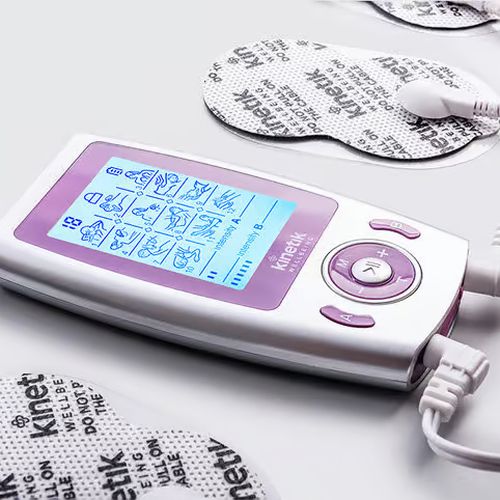Can Transcutaneous Electrical Nerve Stimulation Help Relieve Arthritis Pain?
How Does TENS Work?
TENS alleviates pain by delivering small electrical impulses through electrode pads attached to the skin. The electrodes connect to a compact, battery-powered TENS unit. When switched on, the gentle electrical currents stimulate the nerves, promoting the release of endorphins and other neurotransmitters. These natural chemicals interrupt the transmission of pain signals to the brain.
Studies indicate TENS therapy is most effective when used during activities like walking, exercising, or doing household chores. However, some individuals may prefer resting while using their TENS device, depending on their specific condition.
Can TENS Help Arthritis Pain?
Yes, TENS offers a drug-free way to manage arthritis pain. It works by blocking pain signals rather than treating the condition itself. TENS is especially helpful for rheumatoid arthritis and other inflammatory types of arthritis. It can also provide relief for osteoarthritis, fibromyalgia, and acute postoperative pain.
TENS allows arthritis sufferers to play an active role in their pain management. It serves as a safe, affordable, user-friendly treatment option alongside other therapies. With the right guidance, TENS empowers individuals to tailor therapy to their unique needs.
What Does TENS Feel Like?
TENS produces a gentle tingling or buzzing sensation. The feeling depends on the device settings, programs selected, and electrode placement. While it may seem unusual at first, the sensation is not normally painful or uncomfortable.
Getting Started with TENS
If you’re new to TENS, it’s important to choose an appropriate device and use proper techniques to get the most from your therapy. Here are some tips for getting started:
- Consult your doctor before trying TENS, especially if you have a pacemaker or other implanted medical devices.
- Select a quality TENS unit designed specifically for managing chronic arthritis pain. Look for adjustable intensity, multiple programmes, and a convenient design. Reputable brands like Kinetik Wellbeing, Beurer, and Omron offer excellent options. Our best selling TENS device is the Kinetik Wellbeing Dual Channel TENS Machine.
- Place electrodes correctly for optimum pain relief. Position them near the source of pain along the path of the affected nerves. Muscle stimulation guides included with TENS units provide placement recommendations.
- Start at a low intensity setting and slowly increase as needed. The tingling sensation should be strong but comfortable. Never increase the intensity to painful levels.
- Try different impulse durations and frequencies to determine the best settings for your pain. Higher frequencies around 80-120 Hz often work well for chronic arthritis pain.
- Use TENS consistently for several weeks to get the full benefits. Consistency allows the nerve pathways to become accustomed to the electrical stimulation.
- Consider using TENS both before activities to prevent pain and during flare-ups to control symptoms. Dual use keeps pain from limiting mobility.
- Adjust electrode placement occasionally to prevent skin irritation or adaptation to the stimulation. Shift pads a half-inch over a few times per week.
- Report any skin changes or adverse reactions to your doctor and take a 1-2 day break from electrodes if needed. Serious side effects are very rare.
- Combine TENS with other therapies like exercise, massage, and rest to enhance your overall pain relief and function.
TENS offers a great addition to traditional arthritis treatment plans. With some guidance from your doctor and proper use, it can start effectively easing your pain and improving mobility within just days. Give it 2-4 weeks for the full results. Most find the short learning curve well worth it!
How Long Does TENS Pain Relief Last?
The duration of pain relief varies by individual. Some people experience an ongoing analgesic effect that lasts for hours after turning off the TENS unit. For others, the pain relief coincides more closely with the actual use. Extended daily use is well tolerated by most, provided the muscles get adequate rest periods. Finding the ideal schedule involves some personal experimentation.
Can TENS Be Combined With Other Therapies?
Yes, TENS can complement other pain relief strategies like yoga, tai chi, exercise, and hot/cold therapy. Using a multifaceted approach allows people with arthritis to address pain through both electrical nerve stimulation and lifestyle changes for better overall management.
TENS provides a flexible, non-invasive option for gaining greater control over arthritis pain. Under medical guidance, it can be used alone or combined with other treatments as part of a comprehensive pain management plan.
Photo by Jeff Hardi on Unsplash
Zoom Health is a leading UK supplier of Home Health Tests and Earplugs






